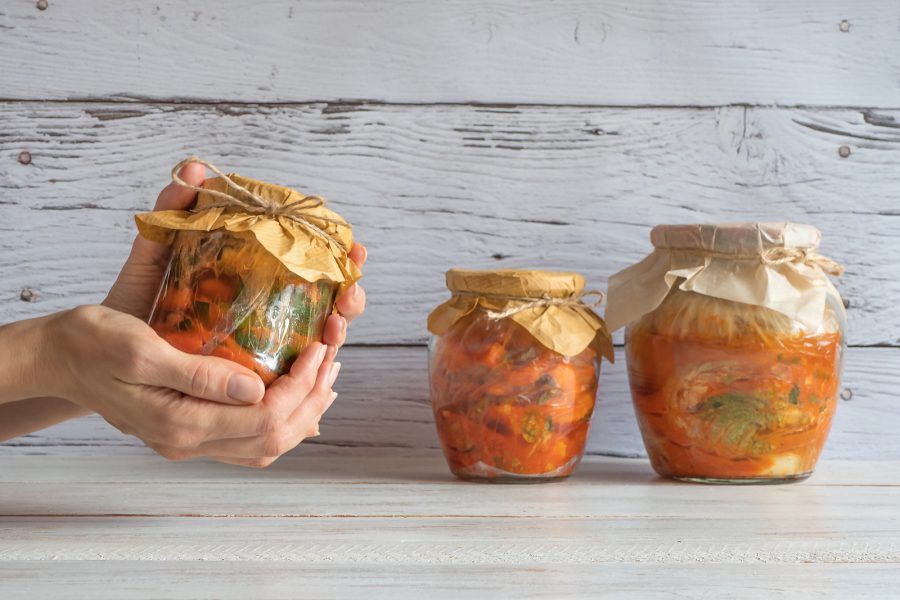GAPS Diet: Critical Differences Between GAPS & BED, 2 Gut-Healing Protocols
Candida does often start in the gut, especially when antibiotics are given. The yeast can cause inflammation and lesions anywhere in the digestive tract, including the mouth, esophagus, stomach, small intestine, and colon.
The lesions provide an opportunity for the yeast to escape into the rest of the body. Yeast have also been observed infecting large cells in the lymph tissue that can be found everywhere in the gut.
The yeasts are then carried by the lymph system to all other parts of our body. So, anyone with an overgrowth of candida in the gut will usually have a systemic yeast infection as well. And any individual with a gut problem will always have a compromised immune system.
With a weakened immune system, it is quite easy for candida to invade the entire body. Learn how to cook in a way that supports your recovery.
1. GAPS does not reflect a true understanding of candidiasis — the systemic yeast infection that affects hundreds of thousands.1
Candida — a yeast or fungal infection — can grow out of control in the digestive tract.
It can also be the source of painful, persistent systemic infections in the bloodstream and organs of anyone at any age.2 This includes babies in the womb. Candida can grow in the lungs, the birth canal, the bladder, and in the sinus cavities. In fact, candida can grow in almost any organ in the body, including on the skin and in the brain.
Originally published in 1994, The Body Ecology Diet was written to help people overcome systemic candida overgrowth, which is now a worldwide epidemic. However, it soon became clear that as a systemic yeast infection, candida may be present in many other serious conditions — such as cancer, diabetes, hormone and neurotransmitter deficiencies, depression, and autoimmune disorders, including gluten intolerance and Hashimoto’s disease.3-5
Thus, the BE Diet program became ideal for many health conditions, and for people of all ages.
While it’s literally impossible to permanently eliminate the systemic candida infection from your body, you can — with certain diet and lifestyle changes taught by Body Ecology — completely bring this infection under control. The key is to eliminate all foods that feed the yeast — literally weakening and then starving them — while creating a robust inner ecosystem in your gut.
The inner ecosystem is essential for building a strong, hardy immune system.
GAPS Diet creator Dr. Campbell-McBride does talk about yeast in her book, Gut and Psychology Syndrome.6 But she would have one believe that candida is mostly a problem in the gut and is only one of many potential pathogens that can be found there.
In fact, a candida infection in the gut can be easily cleared up. But the systemic infection found throughout the entire body is very difficult to conquer. It is this systemic infection that GAPS fails to address and is a major focus for BED.
The GAPS Diet admits that GAPS children and adults without exception are seriously affected by candida and other fungal species. Indeed, the book clearly states, “…candida must be considered with GAPS patients.”
However, it goes on to say, “…anti-candida diets do not work because they allow grains (corn, barley, wheat, rye, millet, oats, rice, etc.) and foods made out of them, as long as they do not contain yeast. Starchy vegetables are also allowed. Potatoes, yams, sweet potatoes, and Jerusalem artichoke.” (p. 98)
The BE Diet does not allow the yeast-promoting grains or vegetables mentioned above, and one can help control a systemic candida infection by following the BE Diet anti-candida protocol.
2. Many foods on the GAPS diet, however, do feed yeast.
They include high-sugar foods, such as fresh and dried fruits, honey, and fresh whey. Too many acidic foods, including meats and nut flour pancakes, cookies, breads, etc. (especially when they’re sweetened with dried fruit, as recommended) simply serve as fuel for a systemic or gut infection.
The Body Ecology Diet is not just for those with candidiasis:
- The Body Ecology System of Health and Healing provides the tools needed to heal the gut as well.
- It’s an excellent diet for correcting nutrient deficiencies and establishing a healthy inner ecosystem in the gut.
- It also helps to build a hardy immune system that can conquer infections.
But addressing a systemic yeast infection is a key step to wellness. It is potentially connected to over 100 autoimmune conditions that plague us today and to the widespread incidence of gluten intolerance — an autoimmune problem affecting the gut and the brain, as well as the entire body.5,7
Candida suppresses T3, the active form of the thyroid hormone that provides energy to every cell in the body. Therefore, anyone with a systemic yeast infection will have an underactive thyroid. The lack of T3 also weakens the adrenals, lowering energy for healing.
To conquer the infection and restore energy to the body, one must weaken and starve the yeast while building a hardy immune system. You do this by eliminating all foods that allow them to grow. Then, build a vibrant inner ecosystem in the gut with fermented foods. To bring an intestinal or systemic yeast infection under control, the BE Lifestyle and Diet can help — a sugar-free, gluten-free, probiotic-rich diet that also has an abundant variety of alkaline-forming plant foods.
Alkalizing is very important. When you alkalize your body, you help change its internal environment to one that is not conducive to the growth of yeast or other pathogens, including cancer.8 You also provide minerals — essential nutrients for the thyroid and the adrenals and, thus, energy to heal.
In contrast, the foundation for GAPS is large quantities of meats, fish, eggs, broth, nut flour baked goods, dried fruits, and honey. This creates a very acidic diet, a key difference between the GAPS and BED.
REFERENCES:
-
- 1. Bongomin F, Gago S, Oladele RO, Denning DW. Global and Multi-National Prevalence of Fungal Diseases-Estimate Precision. J Fungi (Basel). 2017;3(4):57. Published 2017 Oct 18. doi:10.3390/jof3040057.
- 2. Spampinato C, Leonardi D. Candida infections, causes, targets, and resistance mechanisms: traditional and alternative antifungal agents. Biomed Res Int. 2013;2013:204237. doi:10.1155/2013/204237.
- 3. Ramirez-Garcia A, Rementeria A, Aguirre-Urizar JM, Moragues MD, Antoran A, Pellon A, Abad-Diaz-de-Cerio A, Hernando FL. Candida albicans and cancer: Can this yeast induce cancer development or progression? Crit Rev Microbiol. 2016;42(2):181-93. doi: 10.3109/1040841X.2014.913004. Epub 2014 Jun 25. PMID: 24963692.
- 4. Rucklidge JJ. Could yeast infections impair recovery from mental illness? A case study using micronutrients and olive leaf extract for the treatment of ADHD and depression. Adv Mind Body Med. 2013 Summer;27(3):14-8. PMID: 23784606.
- 5. Nieuwenhuizen WF, Pieters RH, Knippels LM, Jansen MC, Koppelman SJ. Is Candida albicans a trigger in the onset of coeliac disease? Lancet. 2003 Jun 21;361(9375):2152-4. doi: 10.1016/s0140-6736(03)13695-1. PMID: 12826451.
- 6. Campbell-McBride, Natasha. Gut and Psychology Syndrome. Medinform Publishing, 2012.
- 7. Fernandez, James, MD, PhD. “Chronic Mucocutaneous Candidiasis.” Merck Manual Professional Version, 2019.
- 8. Park YM, Steck SE, Fung TT, Merchant AT, Elizabeth Hodgson M, Keller JA, Sandler DP. Higher diet-dependent acid load is associated with risk of breast cancer: Findings from the sister study. Int J Cancer. 2019 Apr 15;144(8):1834-1843. doi: 10.1002/ijc.31889. Epub 2018 Dec 7. PMID: 30247761; PMCID: PMC6394228.


